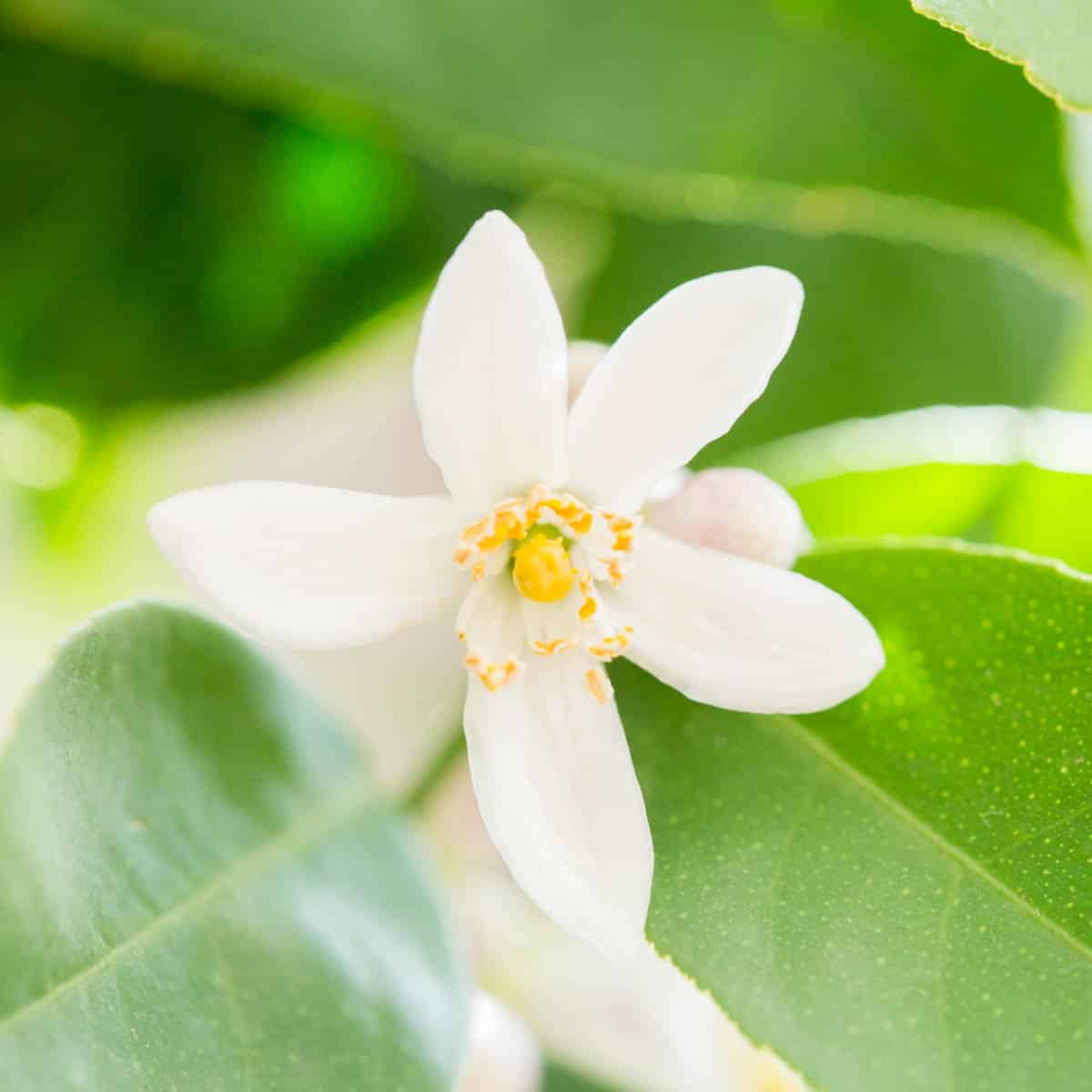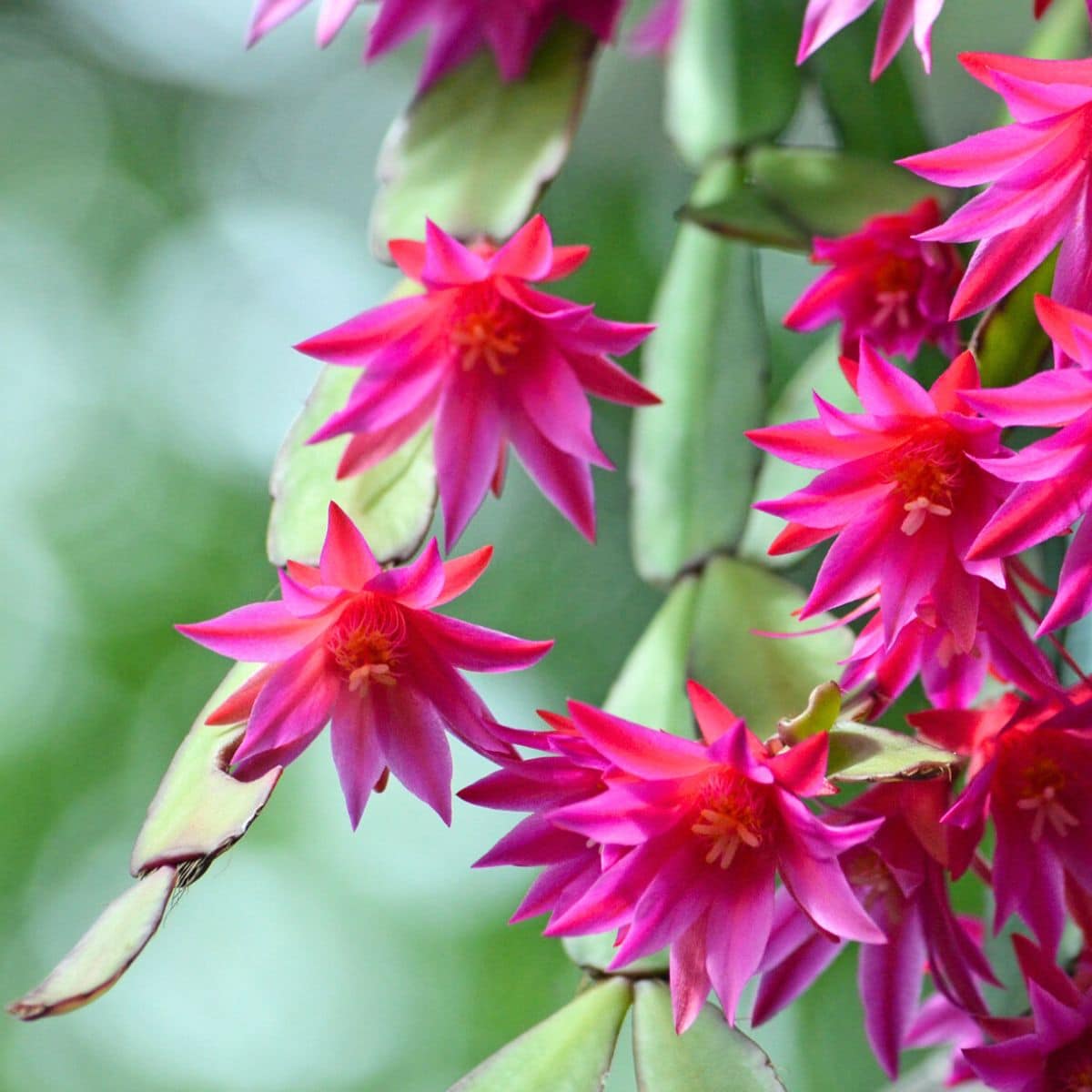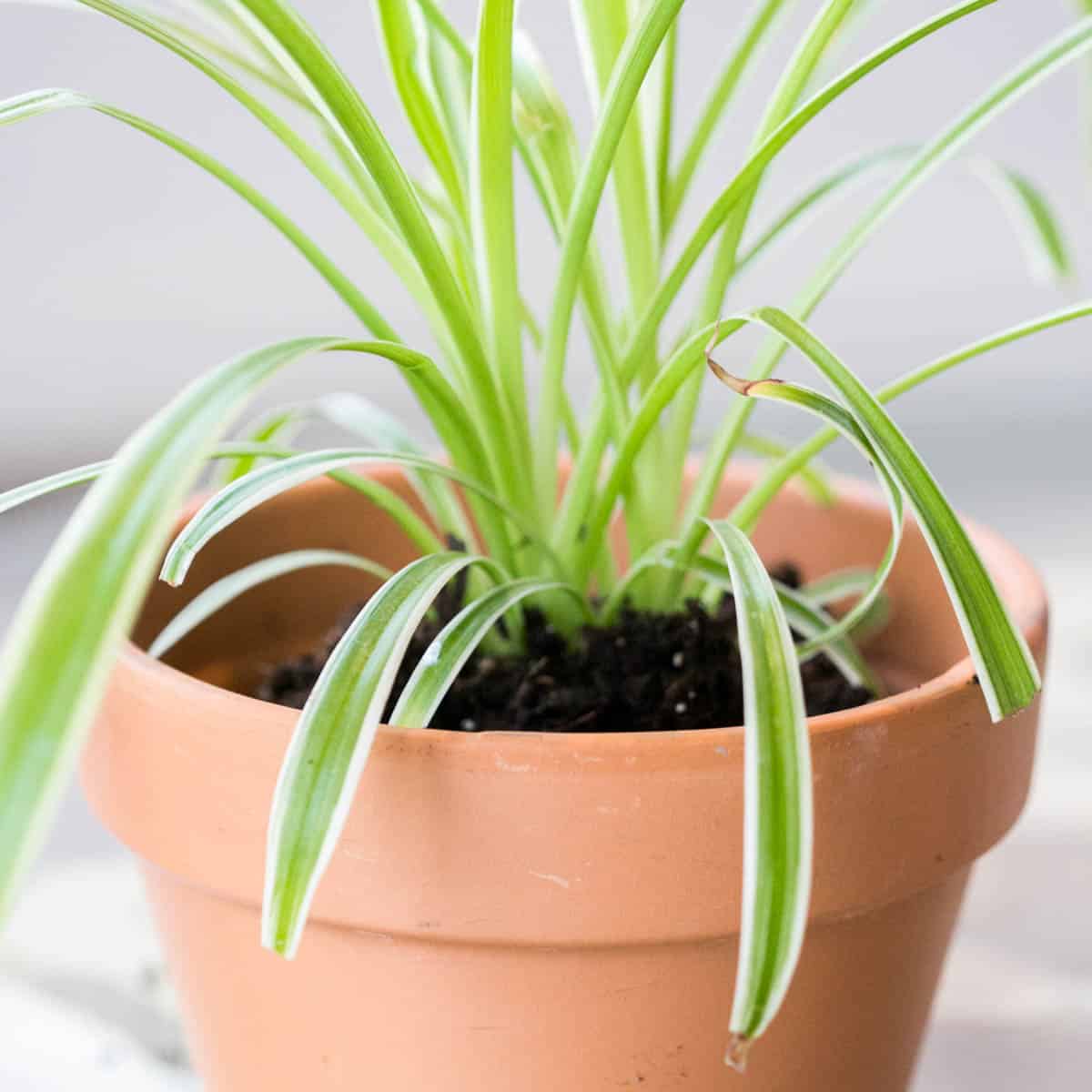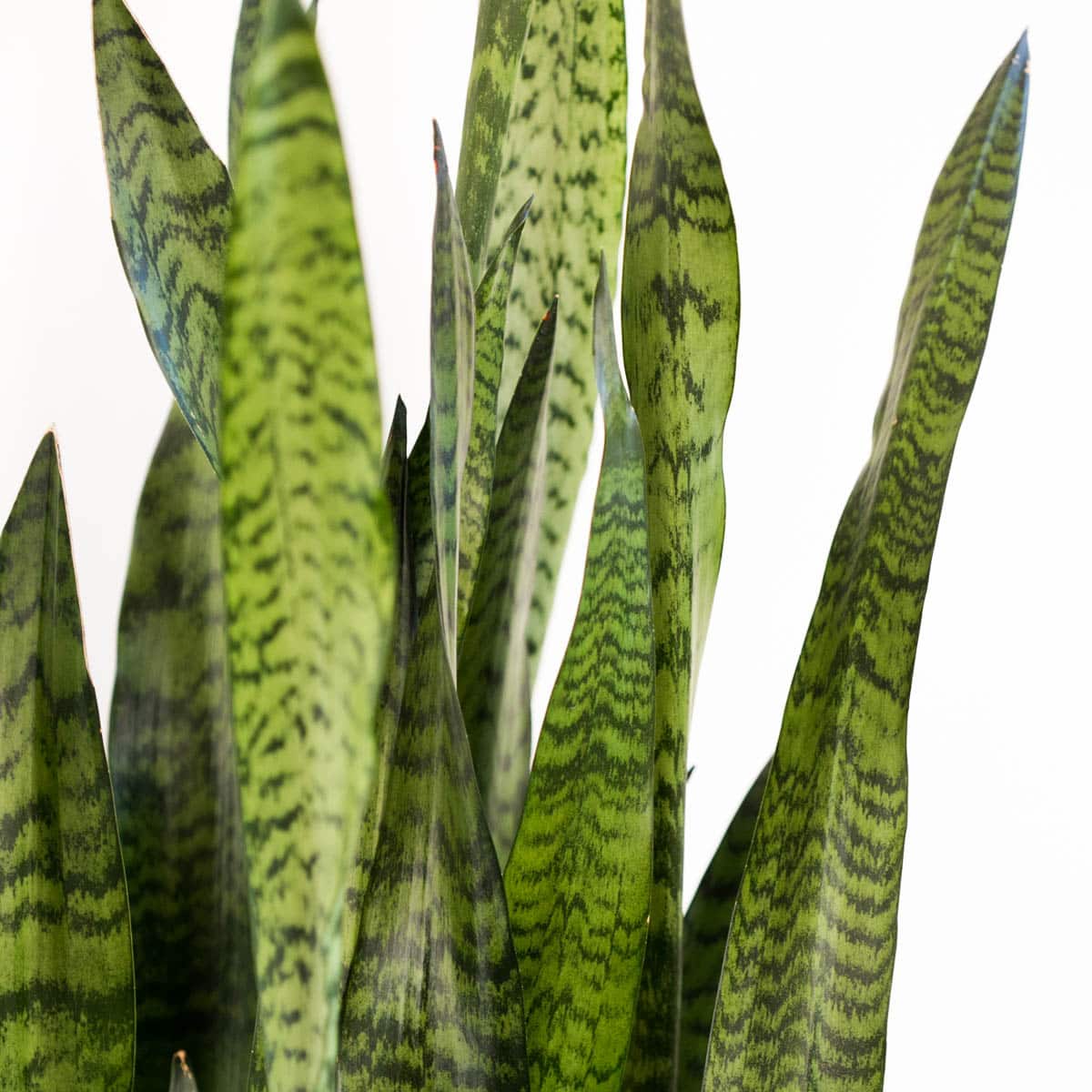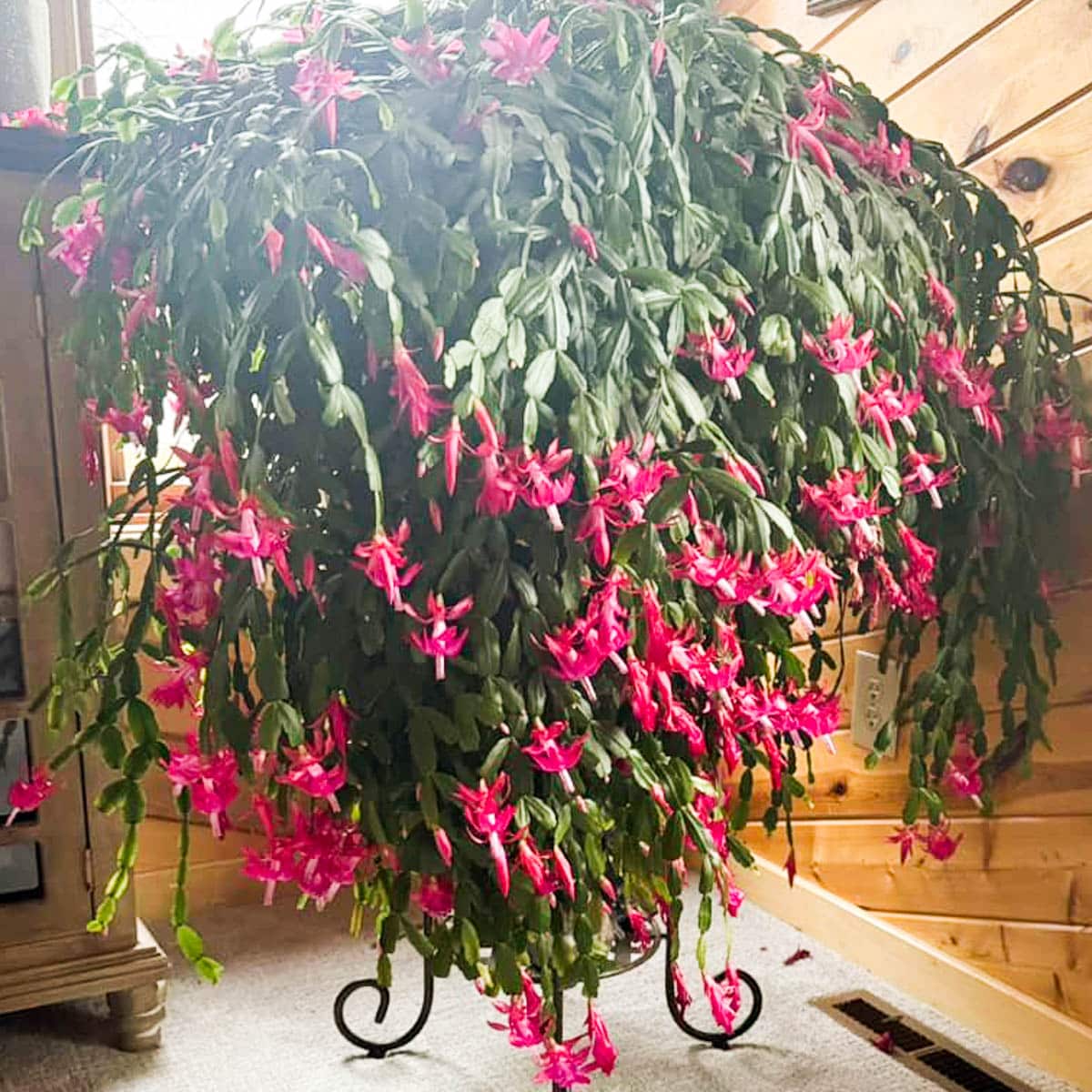Succulents Vs Air Plants (These Unique Plants Are NOT The Same)
Succulents vs air plants… what in the world is the difference!?
Succulents and air plants are two popular houseplants known for their unique appearance and easy growing habits.
Both plants add low maintenance charm to the home and are great for beginner indoor gardeners.
But air plants and succulents are NOT the same plant, and air plants are not succulents. They come from different native habitats and have different growing habits.

Air Plants Verses Succulents
Air plants and succulents have many similarities. They both love bright light, suck up and store excess water, and thrive in humid environments.
Both of these beautiful plants are easy to grow and make a great choice for beginner indoor gardeners. The best thing about both of these intriguing plants is that they are so incredibly easy to grow.
However, air plants and succulents are completely different plants:
Succulents: A succulent is a category for plants that have thick, fleshy leaves and store water within their stems and leaves. They grow in soil and receive nutrients from water and soil.
Air plants: Air plants are a genus of over 600 species of evergreen perennial plants that have long spiraling tendril leaves. They do not root in soil and garner their nutrients from the air and water in their atmosphere.
When grown as indoor plants, air plants do not need a pot or soil to grow in, and succulents do. You can grow air plants in shells, set on a book shelf, on rocks, or on almost any growing medium. Succulents will need to be grown in a container with soil.
Let’s continue to explore succulents and air plants and jump into the differences and similarities between the two types of plants.
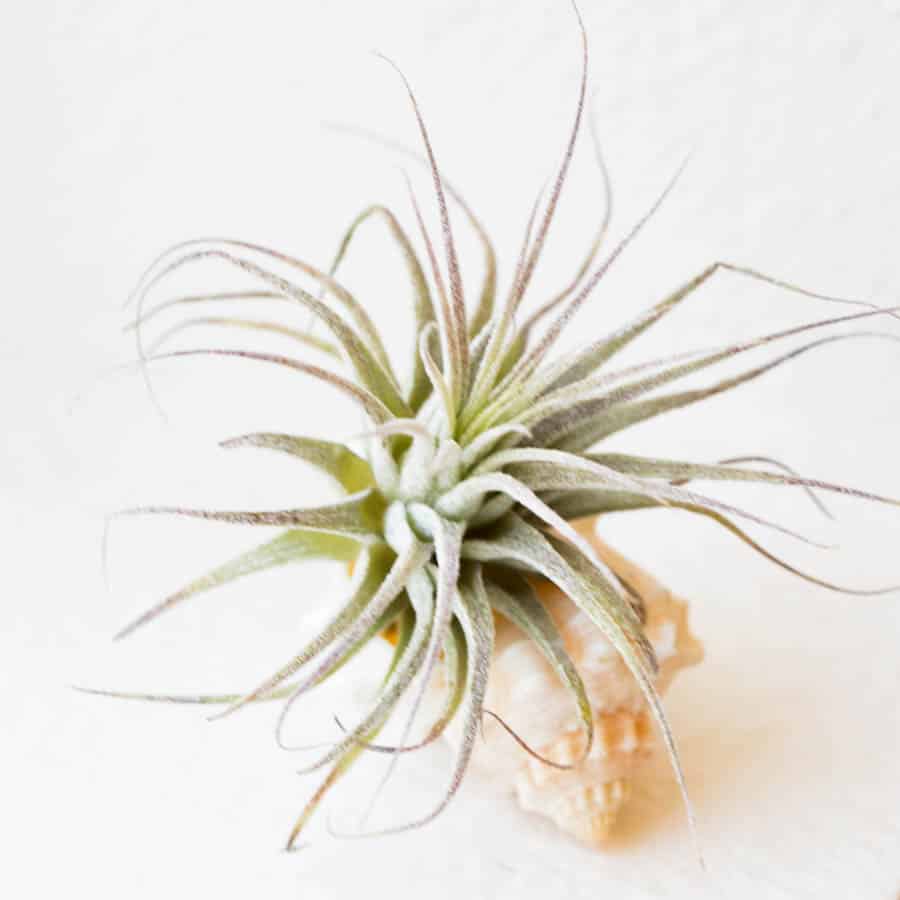
Are Air Plants And Succulents The Same Thing?
First things first: air plants are not succulents! While both can be aesthetic indoor plants they have many differences, and air plants are not categorized as a succulent.
Sometimes people guess that air plants are a type of succulent. But the two are actually different types of plants altogether. Here’s a quick rundown on each type of plant:
About Succulents
A succulent plant is defined as a plant with thick fleshy leaves that are able to store water in dry climates. The Latin name for succulent is succulentus, which means juice or sap.
Succulents grow in soil and use their roots to garner nutrients from the soil.
They are especially equipped to get as much water as they can from dry environments, and they can thrive in dry desert areas.
Any type of plant that can store water in it’s fleshy leaves or stem and has a broad root system can be defined as a succulent. Succulents are categorized by how they act, not by how they are related to other plants. They are not a plant family unto themselves, but can be found in over 60 different plant families.
Jade plant, aloe vera, agave and roseum are common types of succulents.
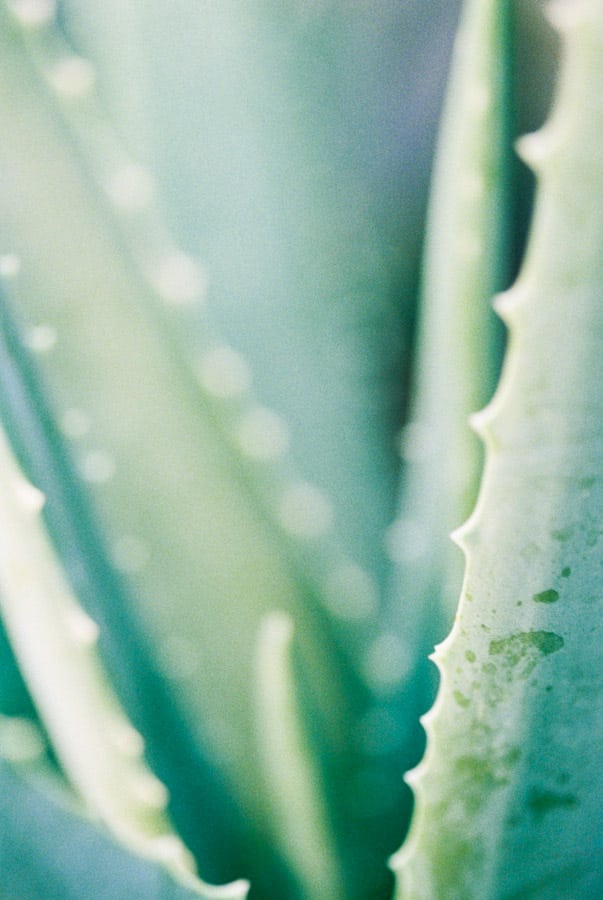
About Air Plants
Air plants, on the other hand, are a group of plants called Tillandsia and are part of the bromeliad family. They feature silvery, long tendrils that gather nutrients from the atmosphere (not from soil).
They are referred to as epiphyte plants, which means they do not get their nutrients from soil and only need air and water to survive. (Pretty amazing right!).
In contrast, succulents are referred to as terrestrial plants, or plants that grow on land. There are over 600 types of plants within the air plant genus.
Air plants have a minimal root system and grow off of other plants, rocks, or bark.
When purchased, air plant roots have been trimmed, so you will likely not notice any roots on your air plant.
Air plants prefer a humid environment and need a good soak of water every few weeks to stay healthy. Some common air plant varieties include Iontha, Stricta, and Spanish Moss.
(Read about another epiphyte, Thanksgiving cactus, here).

Similarities Between Air Plants And Succulents
There are many similarities between air plant and succulents. They both love bright light and can thrive in dry environments.
Both plants need to get enough light and good air circulation in order to thrive. Air plants and succulents alike produce new babies at the base of their plant and are easy to propagate from a parent plant.
Both grow in many different colors, forms and sizes.
Air plants and succulents can thrive at a humidity level of around 50% or higher. This is good news when growing these two plants in the same room.
Succulents and air plants are popular houseplants because they are easy to grow and propagate baby plants easily. In recent years they have grown in popularity because of their exotic and unique addition to home decor and their low maintenance habit.
They are both fun to grow aesthetically pleasing indoor option for plant lovers everywhere.
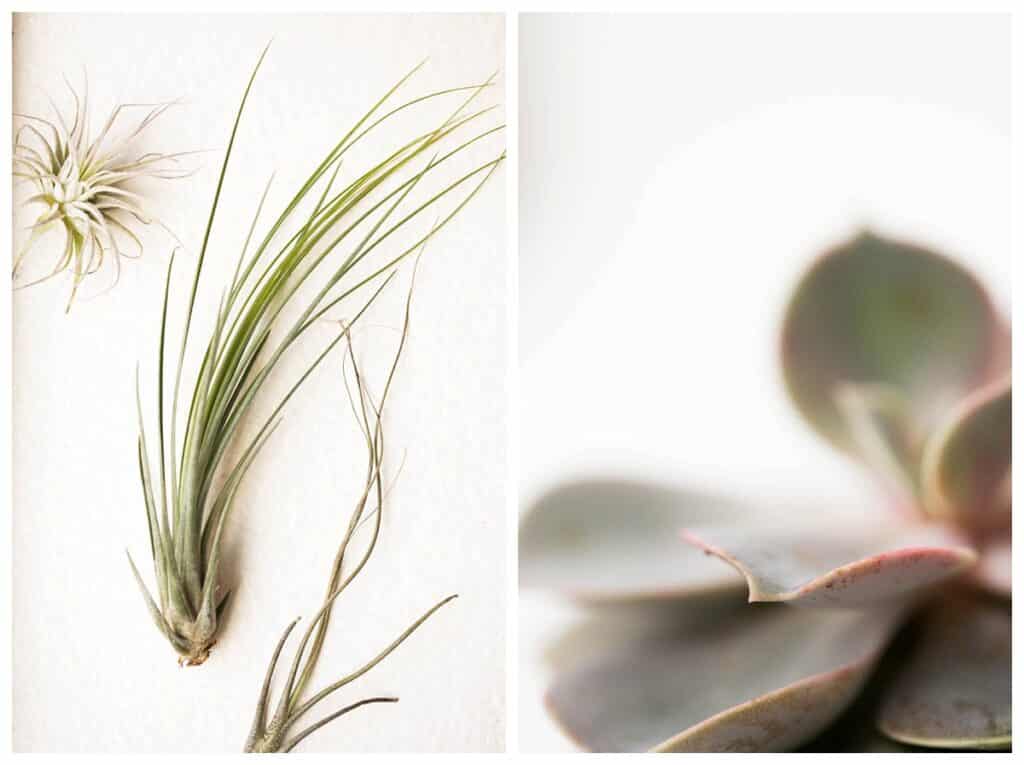
Learn all about blooming air plants here!
Differences
Though air plants and succulents have many similarities, they are two very different plants. They grow in different native habitats and therefore have different needs when grown as house plants.
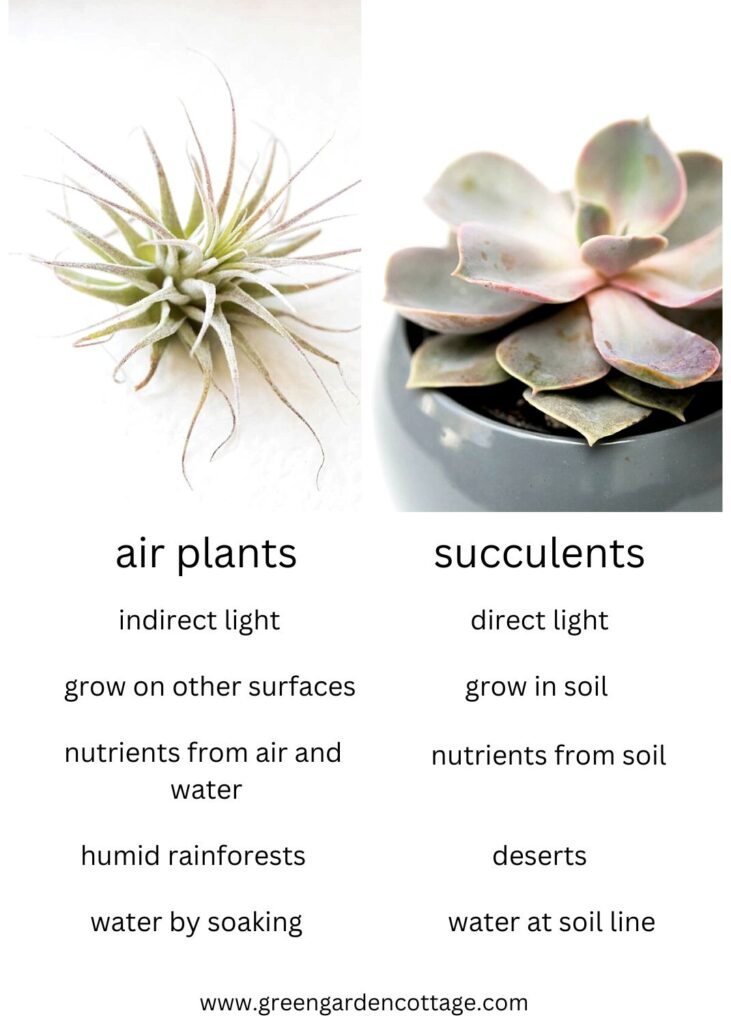
Air plants and succulents not only come from different habitats but have different light, water, and soil requirements. They also vary in their growing + blooming habits.
Let’s explore some of these differences further:
Native Habitat
When growing any houseplant it is helpful to understand it’s natural habitat. This will give you an idea for what the needs of your plant will be.
Air plants are native to tropical climates and love humid rain forests. They do not live in soil but as epiphytic plants attach themselves to surfaces. Succulents grow in dry, arid regions and can be found on every continent. They live in rocky soils. (Remember that succulent is just a way to classify many different fleshy leaved plants).
These differences in habitat will affect how you care for each type of plant:
Air plants:
Air plants are native to northern Mexico, Central America and South America (as well as some areas in the Southern United States). They love humid rain forest climates and attach themselves to branches, bark, rocks and other plants.
They do not live in soil but are found on any dry substrate. The diverse air plant species can grow in a variety of diverse environments, from the Andes mountains to tropical rain forests. They can be found growing on rocks, roofs, or even telephone wires. (The type of air plant you choose will have some nuance in it’s light and care requirements, keep reading for details).

Succulents:
Succulents come from arid, desert like climates that have high temperatures and low rainfall. These adaptable plants grow on every continent except for Antarctica.
While succulents are often found in desert areas they can also grow in the rocky soils of high mountain ecosystems. They thrive in environments with limited water sources.
The soil in these desert areas tends to be sandy or rocky and well draining. Most succulents have a shallow root system, used to gather just enough water from their environment.
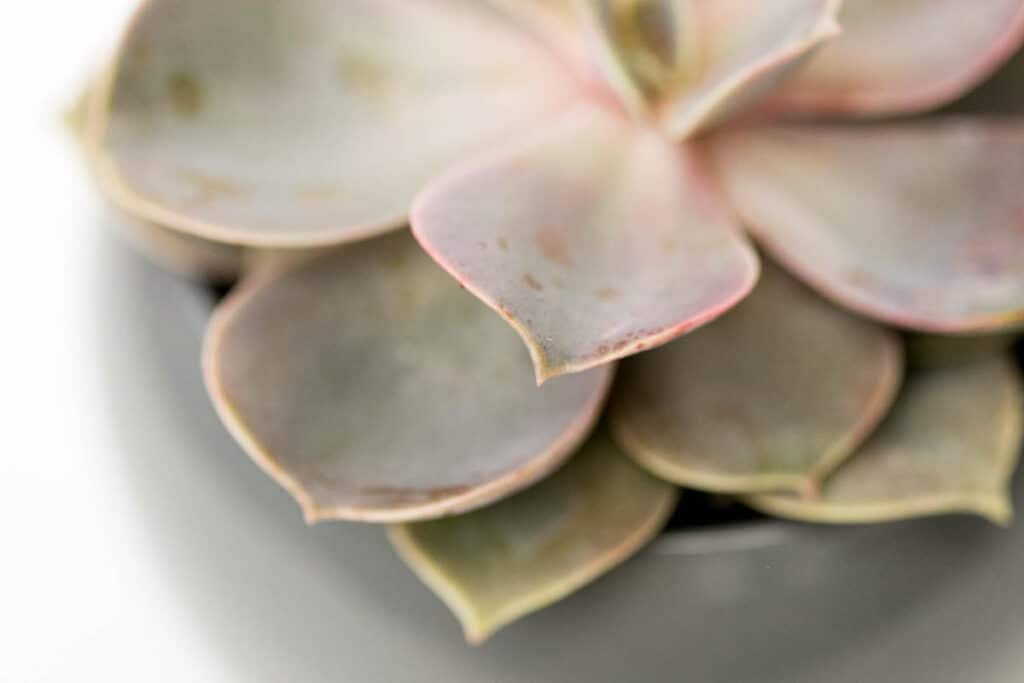
Light
Generally speaking succulents need bright, direct light and many air plants thrive in bright indirect light. (Keep reading to find out nuances of light for air plants).
Air Plants
In general, most species of air plants love bright, indirect light. Remember that these plants are often growing on the bark of other trees and receive diffused light. Varieties with green leaves especially need this bright diffused light.
Gray leaved species of air plants, however, thrive in bright direct light. These air plants are called xeric and have silvery green curly leaves with lots of fuzzy trichomes. They can be found on the upper levels of woods and rocks, basking in sunlight. These varieties can tolerate bright diffused light as well.
Green leaved species of air plants love bright, indirect light. A south facing room with ample window light is a good option.
Succulents
As a general rule of thumb all succulents enjoy long periods of direct sunlight. Some varieties of succulents, such as snake plants, are extremely adaptable and can tolerate lower light. But by and large, succulents usually love direct light and heat.
Water
Both succulents and air plants require very little water, however they vary in how they should be watered.
Most air plants do well with a water bath, where you dunk the plant into tepid water and allow them to soak for about 15 minutes. After their soak, set air plants upside down in an area with enough air circulation to prevent the plants from rotting.
Most succulents do well with an infrequent but deep watering at the base of the plant.
Watering can vary greatly for different types of succulents, and some species of air plants should be misted, not soaked.
For both types of plants it’s important to do your research before watering to make sure the specific species of plant gets on the watering schedule it needs. (A snake plant may require a different amount of water than an aloe, for example. And some types of air plants should only be misted with a spray bottle).
When watering, we recommend using the most natural water source you have available. Typically speaking this is going to be rain water, spring water, filtered tap water.
*Distilled water is typically not recommended for air plants.
Get our guide to the best water for houseplants here.
Growing Indoors
When growing air plants and succulents indoors, you will encounter several differences. Air plants can grow on almost any surface and are commonly displayed perched in shells, on top of bookshelves, or even hanging from fishing line.
Succulents need a sandy soil medium to grow in and a container with drainage. Terracotta pots are a common choice because they allow water vapor to evaporate easily and come in various sizes, and they usually have a drainage hole already cut into the container.
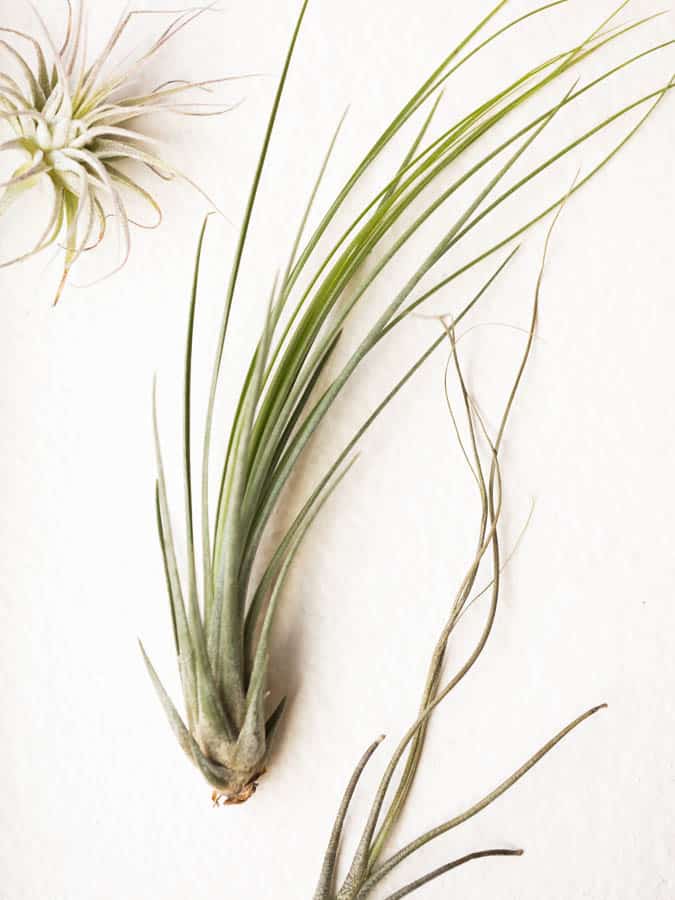
Propagation
Both succulents and air plants easily produce babies, however a different propagation method is used for each type of plant.
Propagation for air plants:
The air plant life cycle includes flowering and then a set of pups, or smaller plants, appearing at the base of the plant. Many air plants can self pollinate and bloom in various colors.
The mother plant must be healthy in order for the new plants to grow, with plenty of indirect sunlight and the right amount of water. On average, healthy air plants produce 1-3 pups after flowering.
When these plants have grown to about 1/3 of the size of the mother plant they can be removed and grown as separate plants!
Propagation for succulents:
Succulent propagation is very easy. There are several methods to choose from. You can root leaf cuttings in soil or water. Soil rooting is the easiest and most common way that succulents are grown.
Many succulents, such as hens and chicks, reproduce prolifically when grown in the right conditions. A single plant may produce dozens of babies that can be planted in another location, if desired.

Soil Differences
As we mentioned earlier in the article, one of the main differences between succulents and air plants is how they grow.
Succulents live in loose, sandy soil where they collect just enough moisture to survive through their roots.
Air plants, on the other hand, attach themselves to surfaces or even grow unattached but sitting on a surface.
Are Air Plants Or Succulents Easier To Care For?
Air plants are easier to care for then succulents because they require no soil. However, both air plants and succulents are easy care plants. They are both somewhat adaptable and very easy to care for.
Both succulents and air plants can survive some neglect and require very little watering to stay happy. The thick stems of succulents will hold water for long periods of time, and air plants need to be watered every 7-10 days.
(Although we speak from experience when we say stretching this further won’t hurt in most environments).
Can I Put Air Plants And Succulents Together?
Yes, you can grow air plants and succulents together. While the two types of plants have different specific needs, they can easily be grown in the same environment.
Make sure to keep air plants away from areas of moisture and soil when planting alongside succulents.
When growing air plants and succulents in the same room, you will want to make sure that succulents have access to bright, direct light. And remember, many varieties of air plants need bright, indirect light.
Since they come from a hotter climate, most succulents will only thrive with direct light (there are some exceptions to this rule, such as snake plants and ponytail palms).

Place your succulents in an area where they will receive the most light, and your air plants adjacent to your succulents, but out of the direct path of light. You can also purchase varieties of air plants that love direct light, such the xeric variety.
A good example of a room ideally suited for both plants would be a south facing sun room.
Just make sure to place your air plants in a location of the room where they will not get sun burnt (higher up on a shelf, for example), or use xeric varieties that enjoy the sunlight.
Consider growing air plants and succulents together in glass globes or a glass container, using varieties of air plants that can tolerate direct sunlight. Make sure to prop up the air plants away from any moisture and soil.
Vertical gardens can be a great option for growing these two plants together as well: many succulents can grow in vertical containers that have shallow soil, and air plants can perch along the wall or on shelves.

Conclusion
Air plants and succulents are low maintenance ornamental plants that are great for beginner gardeners. They both enjoy a medium humidity level and require just a small amount of water.
There are many differences between air plants and succulents, however, and air plants are NOT succulents. The plants differ in their water storage, light needs, and growing locations.
The best way to determine which plant you love best is to just try a few! You will probably fall in love with both air plants and succulents. And the best news of all is that they are both incredibly easy to grow.
We hope this article was helpful to you. Please comment and let us know what your favorite air plant or succulent is!


